Model Providers: Open Source vs. Closed-Source
In this article, we will examine the different providers, their pros and cons, and the implications of each. By the end, you will have the knowledge and understanding to make an informed choice between open-source and closed-source model providers.
Read the entire series
- Raft or not? The Best Solution to Data Consistency in Cloud-native Databases
- Understanding Faiss (Facebook AI Similarity Search)
- Information Retrieval Metrics
- Advanced Querying Techniques in Vector Databases
- Popular Machine-learning Algorithms Behind Vector Searches
- Hybrid Search: Combining Text and Image for Enhanced Search Capabilities
- Ensuring High Availability of Vector Databases
- Ranking Models: What Are They and When to Use Them?
- Navigating the Nuances of Lexical and Semantic Search with Zilliz
- Enhancing Efficiency in Vector Searches with Binary Quantization and Milvus
- Model Providers: Open Source vs. Closed-Source
- Embedding and Querying Multilingual Languages with Milvus
- An Ultimate Guide to Vectorizing and Querying Structured Data
- Understanding HNSWlib: A Graph-based Library for Fast Approximate Nearest Neighbor Search
- What is ScaNN (Scalable Nearest Neighbors)?
- Getting Started with ScaNN
- Next-Gen Retrieval: How Cross-Encoders and Sparse Matrix Factorization Redefine k-NN Search
- What is Voyager?
- What is Annoy?
Choosing between open-source and closed-source model providers is a critical decision impacting the development and deployment of AI technologies. As AI technologies such as large language models (LLMs), embedding models, and other cutting-edge tools continue to shape the future of industries ranging from healthcare to finance, understanding the implications of this choice is essential for making informed decisions and staying ahead of the curve.
LLMs, which are deep learning algorithms capable of generating human-like text, have revolutionized natural language processing and opened up new possibilities for applications such as chatbots, content creation, and sentiment analysis.
Similarly, embedding models, which convert high-dimensional data into lower-dimensional representations, have enabled breakthroughs in image and video analysis, recommendation systems, and anomaly detection. However, utilizing open-source or closed-source model providers goes beyond mere technical considerations. It has far-reaching implications for factors such as transparency, customization, cost, and the pace of innovation.
In this article, we will review the intricacies of this choice. We will examine the different providers, their pros and cons, and the implications of each. By the end, you will have the knowledge and understanding to make an informed choice between open-source and closed-source model providers.
Understanding Model Providers
Model providers can be broadly categorized into open-source and closed-source. These categories define how models are developed, distributed, and utilized by organizations and individuals.
Open-Source Model Providers
Open-source models are freely available to the public, allowing anyone to access, modify, and distribute them. This transparency fosters collaboration and innovation, enabling researchers and developers to build on existing work without starting from scratch.
Notable open-source providers include:
Meta
Hugging Face
Mistral AI
Stability AI
Closed-Source Model Providers
Closed-source models are proprietary and typically developed by private companies. Access to these models is often restricted, and they come with licensing fees or usage costs.
These models are usually well-supported, with extensive documentation, robust performance, and reliable integration capabilities, making them attractive to enterprises that require dependable solutions.
Major closed-source providers include:
OpenAI
Google
Anthropic
Microsoft
In the next section, we will look at various model providers and their offerings.
Key players and their Offerings
Open-Source Providers
1. Meta (LLaMA)
Meta has significantly contributed to the open-source AI community with its LLaMA series. The latest, LLaMA 3, ranges from 8 billion to 400 billion parameters, providing versatile and robust solutions for various AI applications. These models support extensive research and commercial use, fostering innovation through their open-access approach.
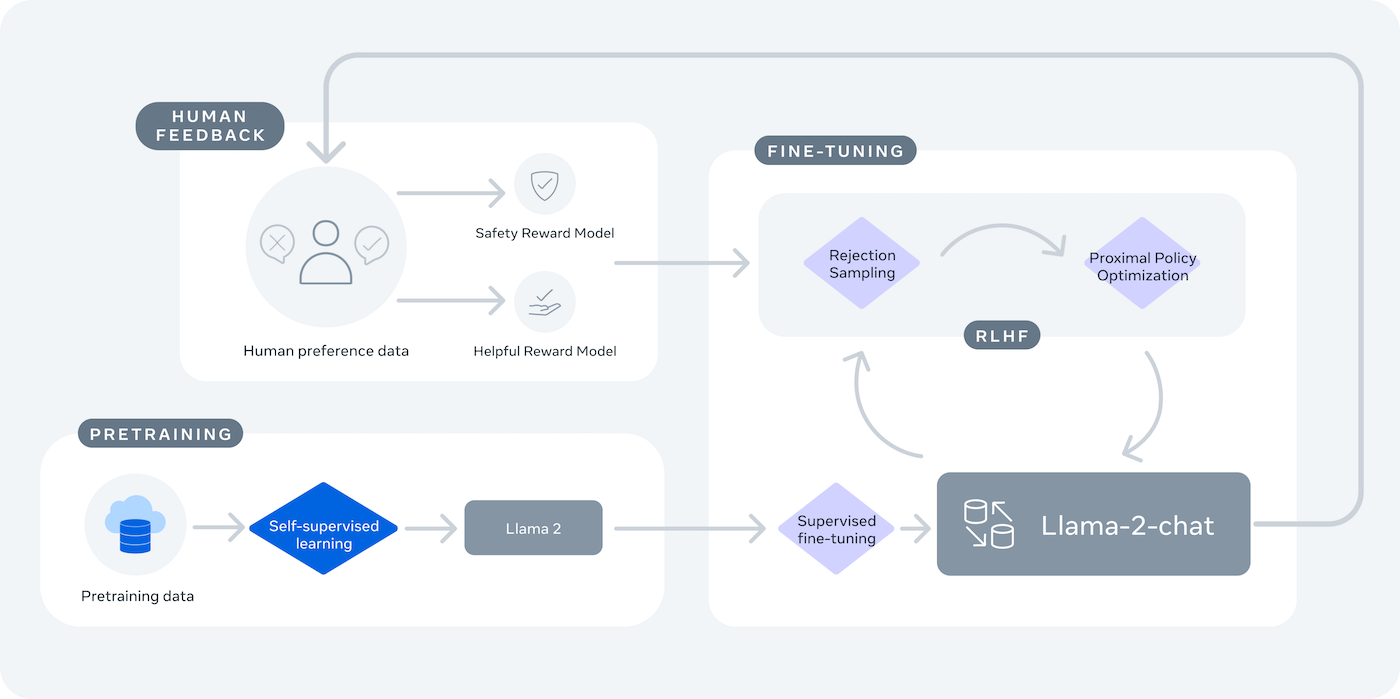
2. Hugging Face (BLOOM and Falcon)
Hugging Face, a leading name in open-source AI offers models like BLOOM and Falcon 180B. BLOOM, with 176 billion parameters, excels in multilingual text generation, supporting 46 languages and 13 programming languages. Falcon 180B, trained on 3.5 trillion tokens, is one of the most powerful open-source models, rivaling even some closed-source counterparts.
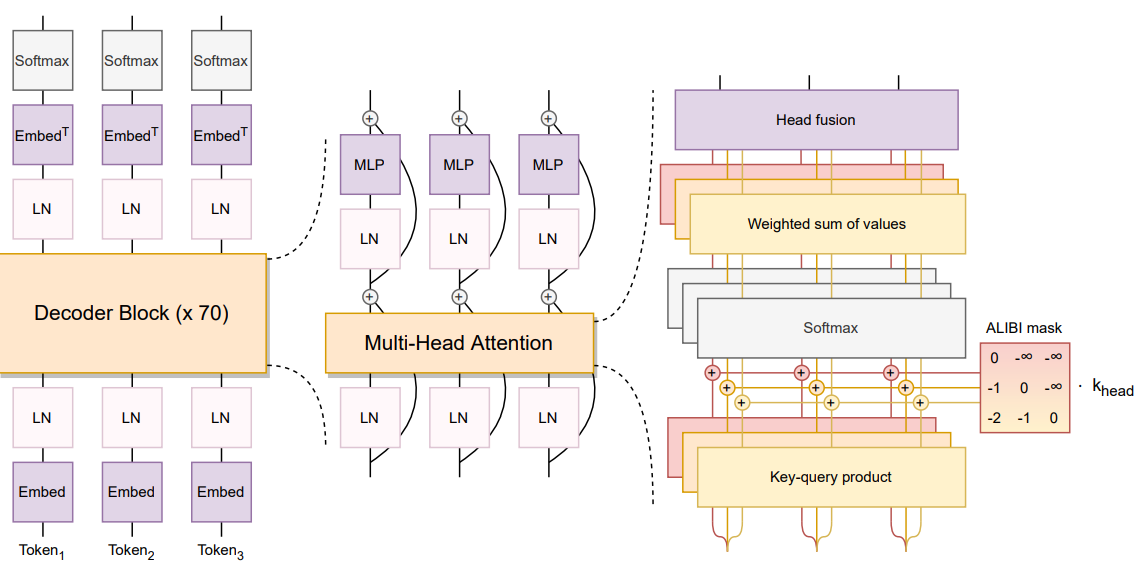
3. Google (Gemma)
Google's latest open-source initiative, Gemma, includes models like Gemma 2B and Gemma 7B. These models are built on the same technology as the Gemini series and are designed to be versatile and accessible, supporting various frameworks and hardware platforms.
4. Mistral AI (Mistral 7B)
Mistral AI focuses on energy-efficient models like Mistral 7B, outperforming many larger models on various benchmarks. This model is ideal for applications requiring high performance with reduced computational resources.
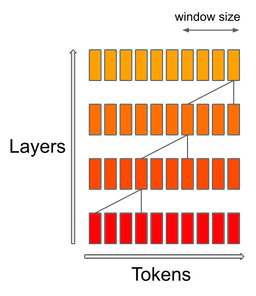
Closed-Source Providers
1. OpenAI (GPT-4o)
OpenAI’s GPT-4o is a benchmark in the AI industry, known for its high performance in natural language understanding and generation. It supports many applications with extensive documentation and support, from chatbots to complex data analysis. It is multi-model, meaning it can take any input and give output.
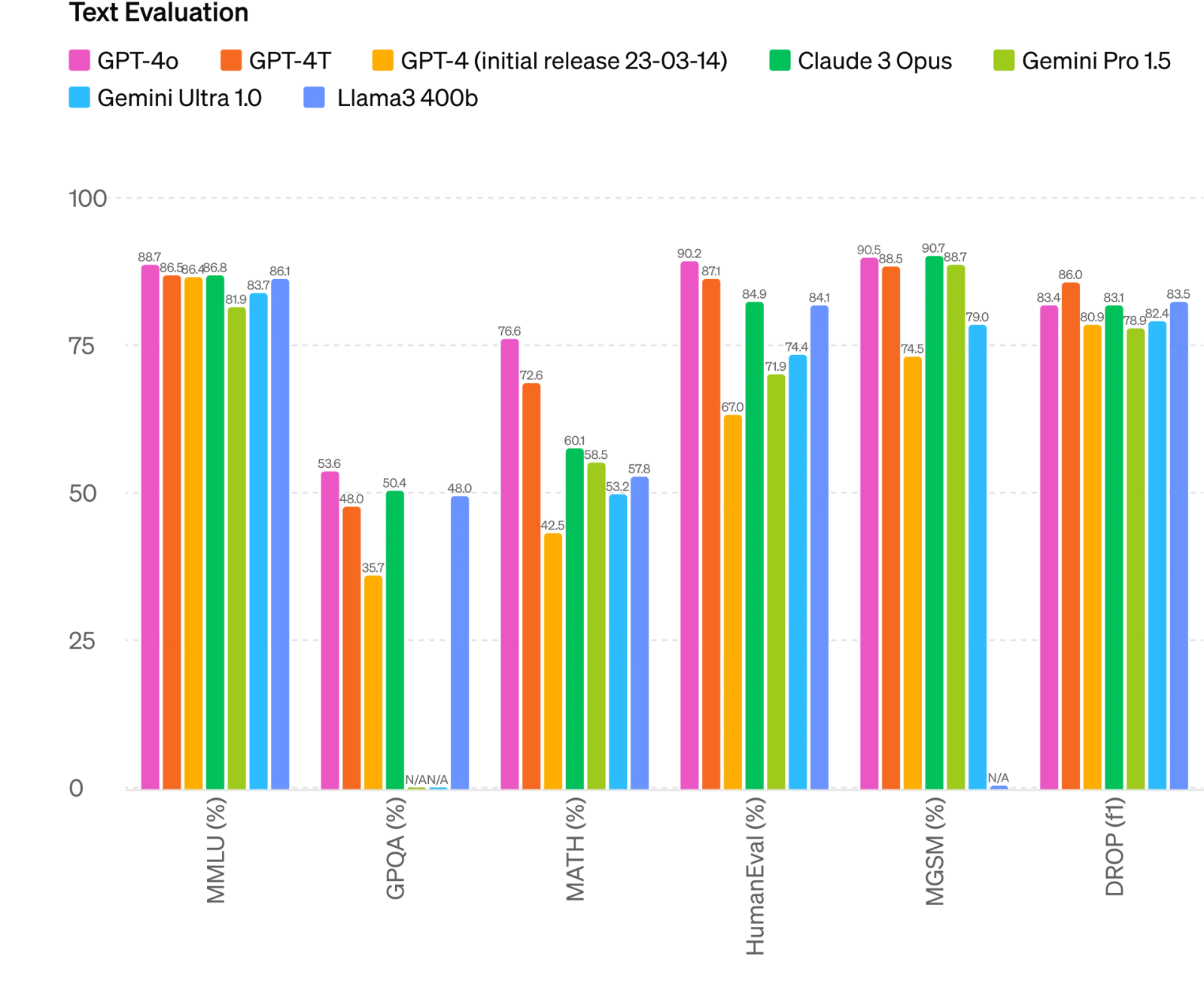
Source: OpenAI
2. Google (Gemini)
Google’s Gemini series, including the latest models like Gemini Ultra, Pro, and Nano, offer multimodal capabilities, integrating text, images, and audio. These models are particularly strong in extracting insights from large datasets, making them suitable for applications in science and finance.
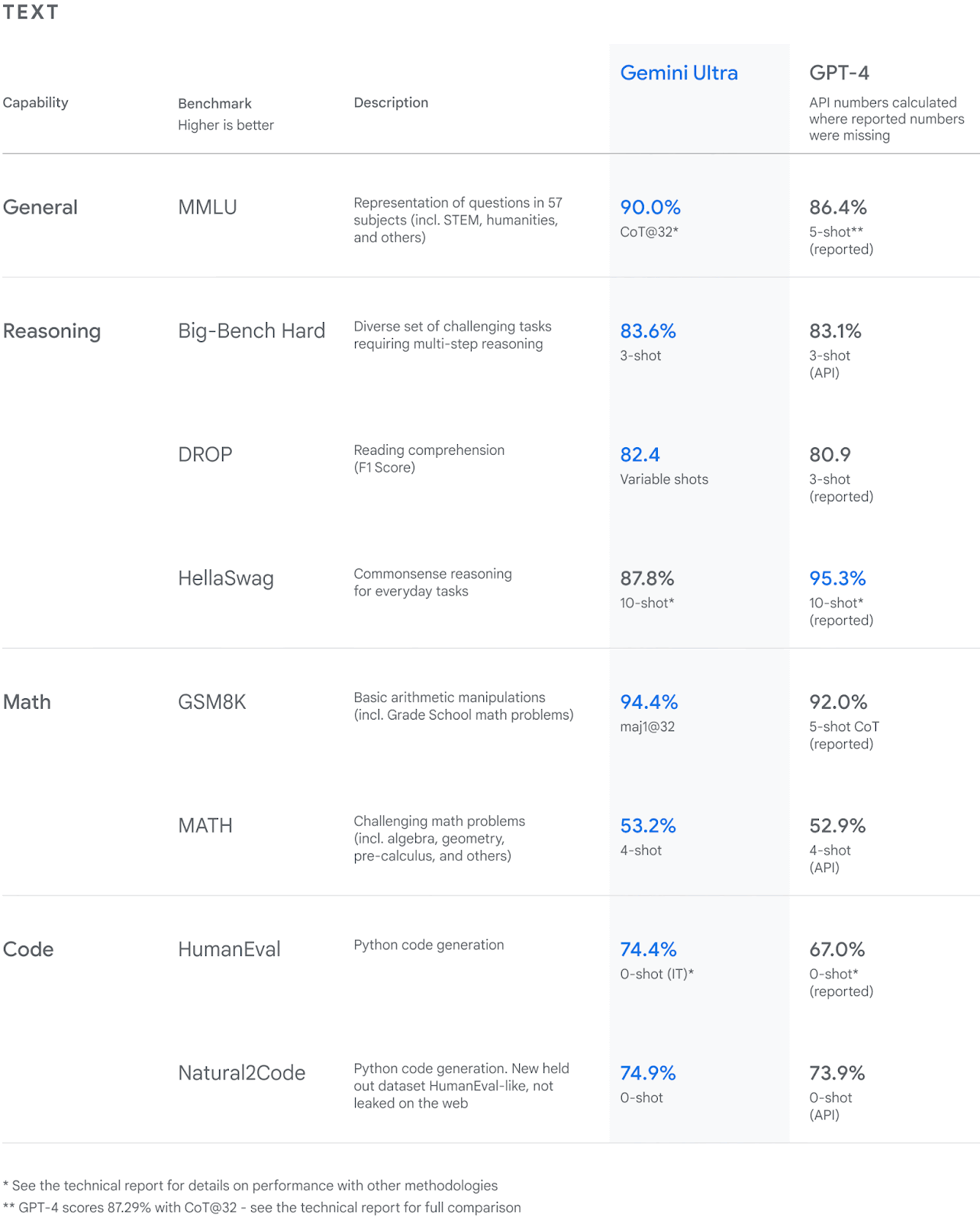
Source: Google
3. Anthropic (Claude 3)
Anthropic’s Claude 3 focuses on enterprise applications, providing high accuracy and a large context window. It is designed to follow complex, multi-step instructions, making it ideal for detailed and structured tasks
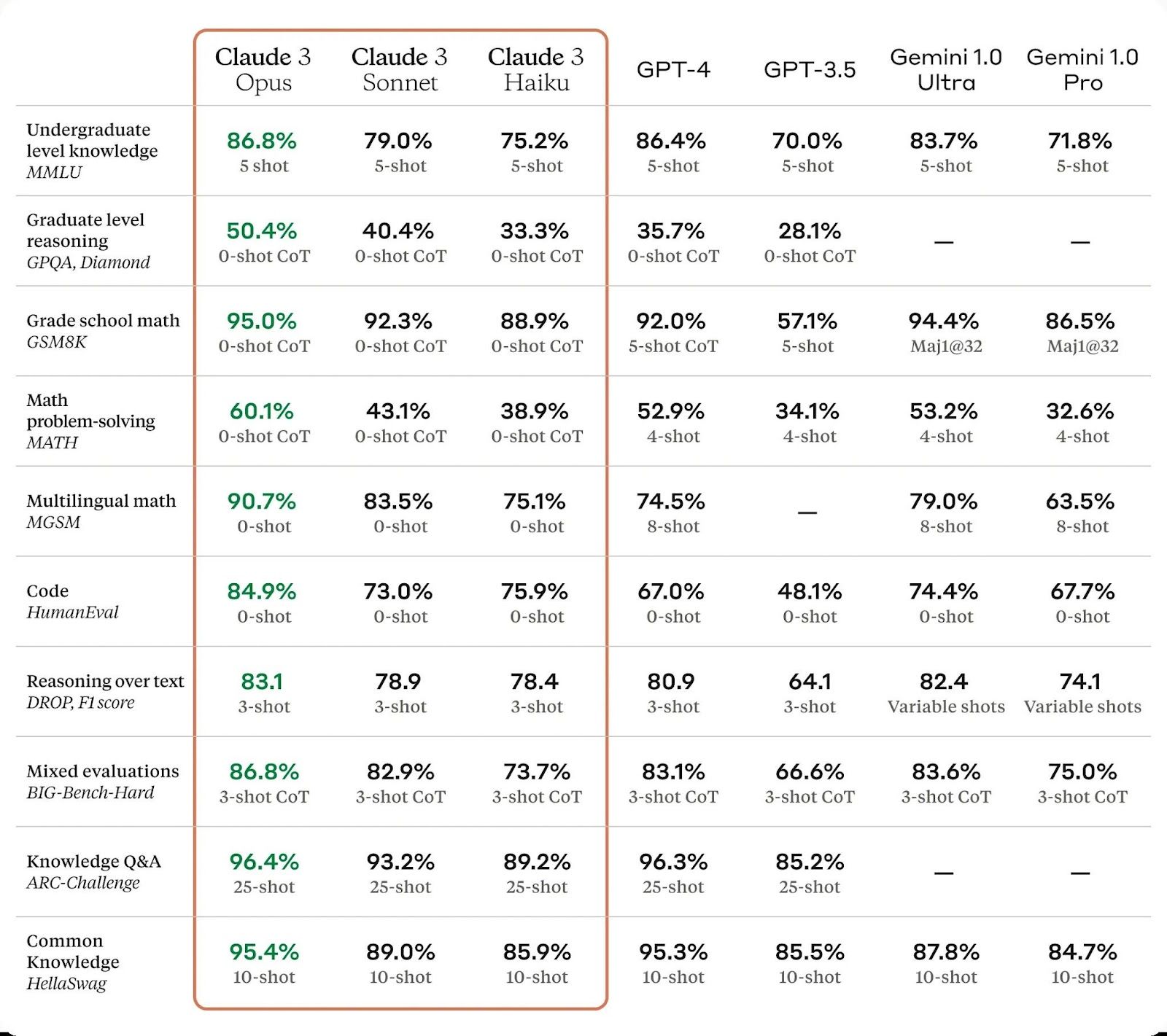
Source: Anthropic
Here is a table summarizing the key players and their offerings:
| Provider | Model(s) | Key Features | Use Cases |
| Hugging Face | BLOOM, Falcon 180B | Multilingual support, free for research/commercial | Text generation, multilingual applications |
| Meta | LLaMA 2, LLaMA 3 | Various sizes, safety-focused, versatile | Academic research, enterprise applications |
| EleutherAI | GPT-Neo, GPT-NeoX | High performance, open-source | Text generation, data analysis, educational tools |
| Mistral AI | Mistral 7B | Energy-efficient, high performance | Real-world applications, low-resource environments |
| OpenAI | GPT-4o | Multi-modal, Advanced text generation, enterprise-grade | Chatbots, data analysis, content creation |
| Gemini | Multimodal capabilities, complex reasoning | Science, finance, data extraction | |
| Anthropic | Claude 3 | Multi-modal, High accuracy, large context window | Enterprise applications, complex instructions |
| IBM | Watson | Natural language processing, data analysis | Healthcare, finance, customer service |
| Microsoft | Azure OpenAI Service | Integration with cloud services, customization | Enterprise AI applications, cloud integration |
Comparative Analysis of Open Source vs. Closed-Source Providers
Accessibility and Transparency
Open-Source Providers
Open-source AI models are celebrated for their accessibility and transparency. The source code for these models is freely available, allowing developers to inspect, modify, and improve upon the existing code.
This openness fosters a collaborative environment where community contributions drive innovation and refinement. For example, models like Meta’s LLaMA and Hugging Face’s BLOOM provide extensive customization options, enabling users to tailor the models to specific needs and integrate them into diverse applications.
The transparency of open-source models ensures that users can understand the underlying mechanisms and trust the model's operations.
Closed-Source Providers
Closed-source models, on the other hand, are proprietary and restrict access to the source code. This proprietary nature means that only the developing company can update, modify, or fix issues within the model.
Companies like OpenAI with GPT-4 and Google with Gemini control the distribution of updates and features, ensuring a consistent and stable user experience but limiting customization and adaptability. Users must rely on the provider for improvements and support, which can be both an advantage in terms of stability and a limitation in terms of flexibility.
Cost Implications
Open-Source Providers
The primary advantage of open-source models is their cost-effectiveness. These models can be implemented without licensing fees, making them accessible to smaller companies and individual developers.
However, the hidden costs of support and maintenance should be considered. While the community provides significant support, complex implementations may require hiring specialists or dedicated teams to manage and customize the models. Additionally, the infrastructure needed to run these models, especially large ones, can add to the cost.
Closed-Source Providers
Closed-source models often come with substantial licensing fees. For example, OpenAI’s GPT-4 requires a subscription for access, and enterprise-level deployments may involve significant costs.
However, these fees typically include professional support, regular updates, and service level agreements (SLAs) that ensure reliability and performance. The cost structure of closed-source models can be more predictable, which is beneficial for budgeting in enterprise environments. The overall cost includes the licensing fees and the integration and ongoing support provided by the vendor.
Innovation and Updates
Open-Source Providers
The community drives innovation in open-source models. Developers worldwide contribute to improving these models, resulting in rapid advancements and a broad range of applications.
For instance, the collaborative efforts behind models like BLOOM and LLaMA 3 have significantly improved performance and capabilities. This community-driven approach can lead to innovative features and enhancements that might not emerge in a closed development environment.
Closed-Source Providers
Closed-source models benefit from a structured and potentially more stable innovation pipeline. Companies like Google and OpenAI invest heavily in research and development, ensuring their models are at the forefront of technology.
These companies can focus on long-term goals and significant breakthroughs, offering stable and reliable updates. The innovation in closed-source models is often more incremental but is backed by substantial resources and focused expertise, ensuring consistent quality and performance.
Support and Reliability
Open-Source Providers
Support for open-source models largely comes from the community. This can be a double-edged sword; while there is a wealth of shared knowledge and community-driven troubleshooting, the quality and speed of support can vary.
Finding timely and effective solutions for complex issues can be challenging. The reliability of open-source models can depend on their specific implementation and the expertise of the developers managing them. However, the collaborative nature of open-source projects means that the community often identifies and resolves bugs quickly.
Closed-Source Providers
Closed-source models typically offer professional support and robust service level agreements (SLAs). This ensures that users can access timely and reliable assistance, which is crucial for enterprise applications.
The controlled environment of closed-source models means that updates and improvements are thoroughly tested before release, enhancing stability and reliability. Companies like IBM with Watson and Google with Gemini provide comprehensive support packages that include technical assistance, training, and ongoing maintenance, ensuring that the models perform consistently and reliably.
Choosing the Right Model Provider for Your Needs
When selecting a model provider for AI, software libraries, or other tools, the decision between open-source and closed-source options can significantly impact your project. Let’s see the factors that we should consider:
Open-Source Providers
Cost-Effective: Open-source software (OSS) is often free or has minimal costs compared to proprietary alternatives. This affordability can be especially beneficial for startups, small businesses, or projects with budget constraints.
Innovation and Collaboration: The open-source community fosters collaboration, leading to rapid innovation and improvements. Developers worldwide contribute to enhancing the software, which can result in robust, feature-rich solutions.
Flexibility and Customization: Access to the source code allows you to tailor open-source solutions to meet your specific technical requirements. Customization is essential when your project demands unique features or integrations.
Community Support: The large community around open-source projects provides support, documentation, and troubleshooting assistance. You’re not alone when facing challenges.
Transparency and Security: Publicly available source code allows for transparency. Bugs and vulnerabilities are more likely to be discovered and fixed promptly by the community.
Closed-Source Providers
Control and Proprietary Features: Closed-source software offers exclusive control over the product. Proprietary solutions may be preferable if your business strategy relies on unique features or competitive advantages.
Professional Support: Closed-source vendors typically provide professional support, including documentation, training, and direct assistance. This can be crucial for critical applications.
Security and Intellectual Property Protection: Proprietary software can protect against external threats and intellectual property theft. If data security is paramount, closed-source options may be more appealing.
Quality Assurance: Closed-source products often undergo rigorous testing and quality assurance. You can expect stable, well-maintained software.
Ethical Considerations
Data Privacy: Open-source software requires careful management to avoid privacy risks. Closed-source solutions may offer better data protection measures.
Licensing Compliance: Ensure compliance with licensing terms to avoid legal issues when using open-source software.
Community Impact: Consider the impact on the software community. Open-source contributions foster a culture of sharing and collective growth.
Business Goals and Technical Needs
Market Position: Closed-source solutions may align better with unique market positioning or branding strategies.
Cost Efficiency at Scale: Open-source software is cost-effective for scaling up operations.
Customization and Integration: Choose based on your project’s need for customization and integration with existing systems.
Weigh the pros and cons carefully. Open-source software provides affordability, community support, and transparency, while closed-source solutions offer control, professional support, and security. Your choice should align with your project’s goals, technical requirements, and ethical stance.
Remember, both open and closed-source models have their place in the software ecosystem. Consider your specific context and choose wisely!
Further Resources
To further your understanding and aid in the decision-making process for choosing the right model provider, consider delving into the following academic papers:
Comparative Analysis for Open-Source Large Language Models: This paper presents a comparative analysis of various open-source LLMs, assessing their features, strengths, and limitations, including licensing, training methods, computing resources needed, and robustness.
Open, Closed, or Small Language Models for Text Classification?: This study evaluates different classes of models for text classification tasks, discussing whether open-source models match closed ones and the types of practical procedures that can improve performance.
Open Source vs. Closed Source Software: Towards Measuring Security: This research contributes to the quantification of software security by analyzing the review process of open-source and closed-source development and proposing new metrics.
These papers offer valuable insights and empirical evidence that can guide you in making an informed choice between open and closed-source model providers. As you conclude your exploration of this topic, these resources will provide a solid foundation for understanding the complexities and considerations involved in selecting the most suitable provider for your needs.
- Understanding Model Providers
- Key players and their Offerings
- Comparative Analysis of Open Source vs. Closed-Source Providers
- Choosing the Right Model Provider for Your Needs
- Further Resources
Content
Start Free, Scale Easily
Try the fully-managed vector database built for your GenAI applications.
Try Zilliz Cloud for FreeKeep Reading
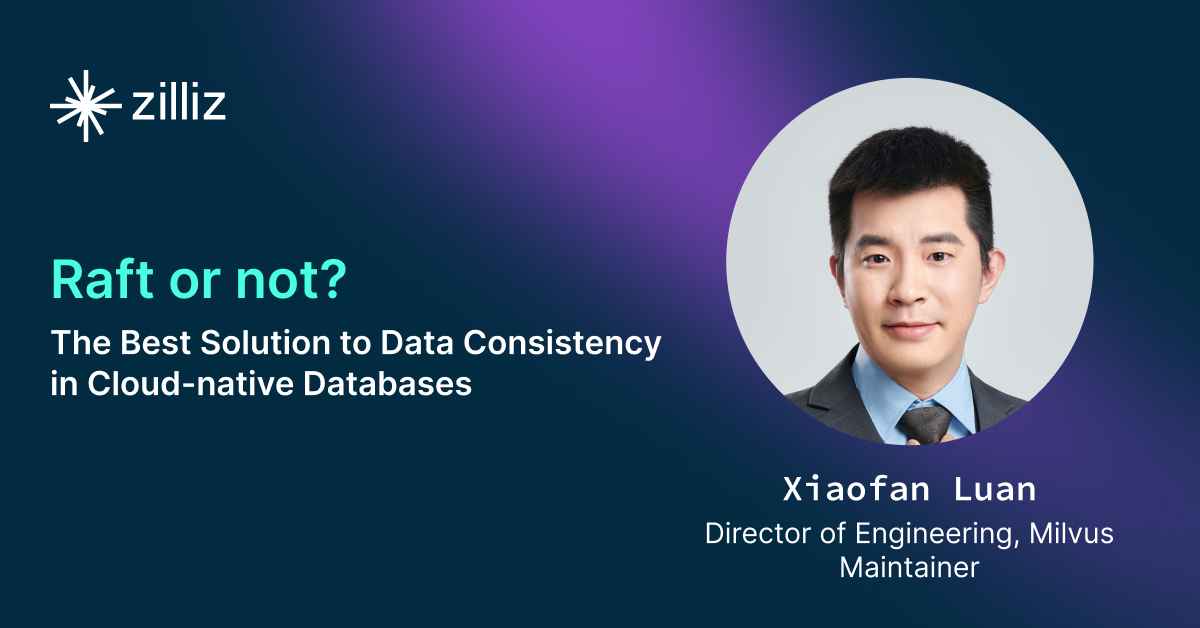
Raft or not? The Best Solution to Data Consistency in Cloud-native Databases
Explain why consensus-based algorithms like Paxos and Raft are not the silver bullet and propose a solution to consensus-based replication.
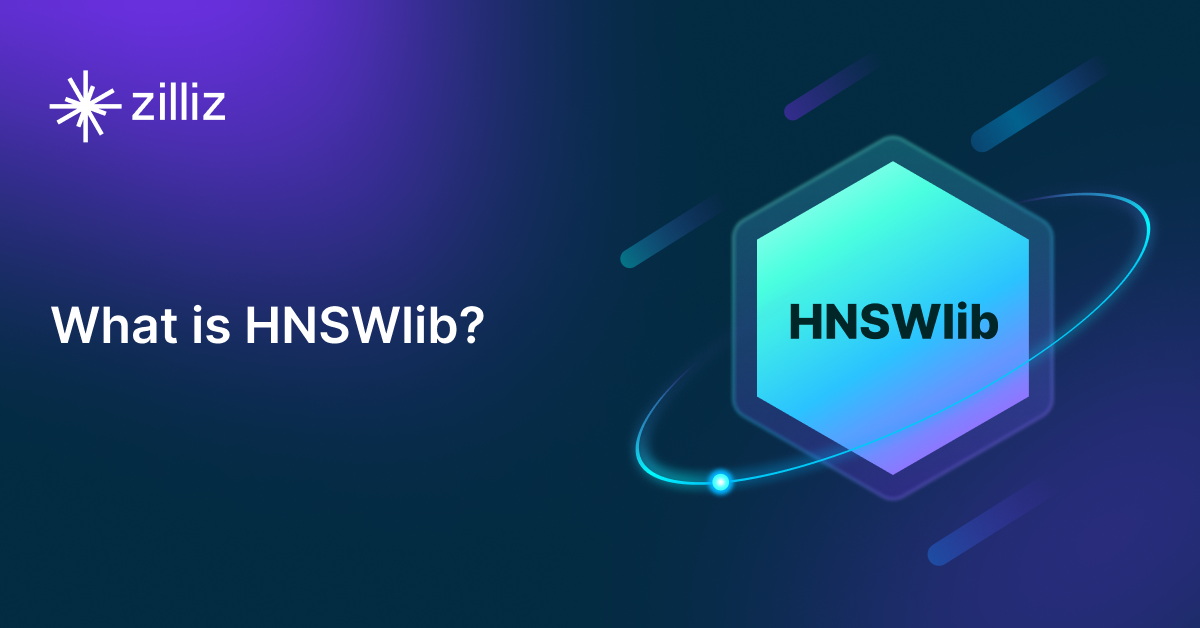
Understanding HNSWlib: A Graph-based Library for Fast Approximate Nearest Neighbor Search
HNSWlib is an open-source C++ and Python library implementation of the HNSW algorithm, which is used for fast approximate nearest neighbor search.
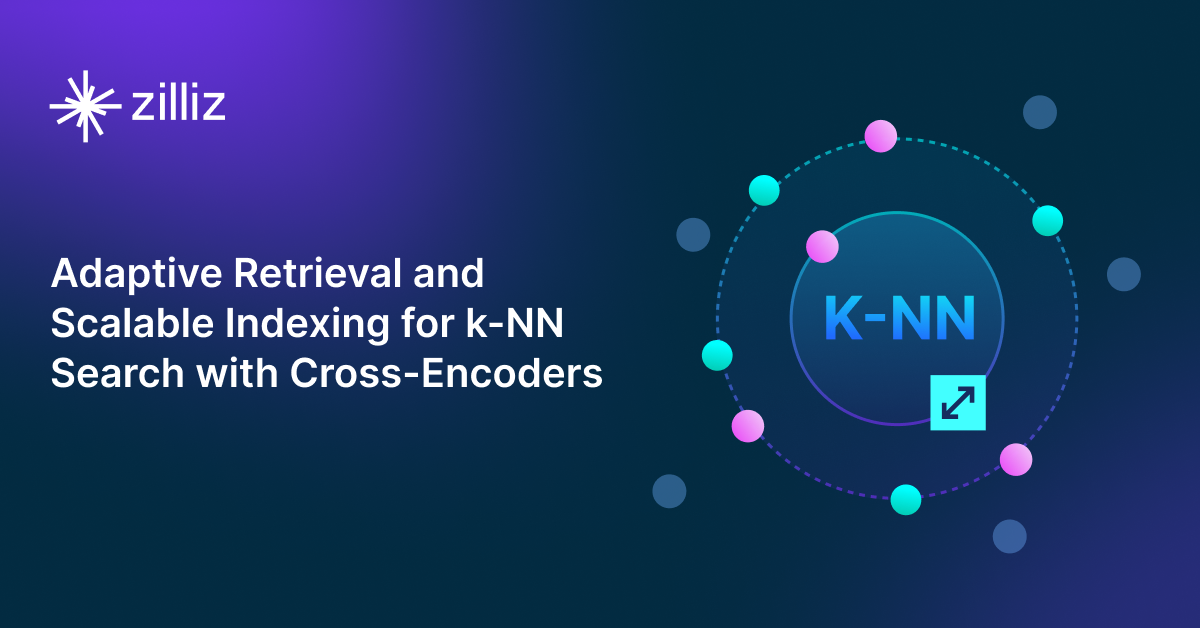
Next-Gen Retrieval: How Cross-Encoders and Sparse Matrix Factorization Redefine k-NN Search
AXN (Adaptive Cross-Encoder Nearest Neighbor Search) uses a sparse matrix of CE scores to approximate k-NN results, reducing computation while maintaining high accuracy.
